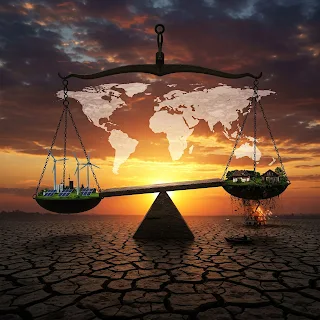Achieving net-zero emissions by mid-century is a global goal agreed upon by most nations under the Paris Agreement. However, climate financing—essential to this transition—remains unequally distributed. Developing countries, which are often the most vulnerable to climate change, are receiving far less financial support than they need. This inequality is not just an economic issue; it's a major roadblock to global climate progress.
Understanding Climate Financing
What is Climate Finance?
Climate finance refers to funds allocated to support mitigation and adaptation efforts to combat climate change. It includes investments in renewable energy, infrastructure resilience, emission reduction technologies, and sustainable agriculture.
Sources of Climate Finance
-
Public Sector: Government-led climate funds, such as the Green Climate Fund (GCF).
-
Private Sector: Impact investing, green bonds, and institutional investors.
-
Multilateral Institutions: World Bank, International Monetary Fund (IMF), and regional development banks.
The Inequality Crisis in Climate Financing
The North-South Divide
High-income countries have historically contributed the most to global emissions. However, low- and middle-income nations often bear the brunt of climate impacts. Despite this, climate finance flows heavily favor richer countries and regions.
-
Sub-Saharan Africa: Receives less than 5% of global climate finance.
-
South Asia & Latin America: Underfunded despite high vulnerability and potential for renewable energy expansion.
The $100 Billion Pledge—Still Unmet
In 2009, developed nations pledged to mobilize $100 billion annually by 2020 to assist developing countries. Not only has this goal not been met, but much of the reported funding includes repackaged development aid or high-interest loans—not grants or new capital.
Consequences of Climate Finance Inequality
1. Slowed Renewable Energy Transitions
Without adequate funding:
-
Grid upgrades are delayed.
-
Solar and wind projects remain unimplemented.
-
Storage technologies and smart grids are unaffordable.
2. Widening Adaptation Gap
Communities most vulnerable to climate shocks—such as coastal villages, island nations, and drought-prone agricultural regions—struggle to fund adaptation projects like seawalls, early warning systems, or climate-resilient crops.
3. Loss of Trust and Cooperation
Developing countries are losing faith in international commitments. This damages diplomatic cooperation, making climate negotiations more difficult.
Why Equity in Finance Matters for Net-Zero
Decarbonization Needs Are Not Equal
A just transition recognizes that:
-
Some countries need to leapfrog to clean tech.
-
Others must first ensure basic energy access.
-
Financing must match individual country needs, not follow a one-size-fits-all approach.
Unlocking Global Emission Reductions
According to the International Energy Agency (IEA), nearly 70% of the $4 trillion in annual clean energy investment required must be directed to developing countries. Without equitable finance, net-zero goals are impossible.
Solutions: Bridging the Climate Finance Divide
1. Reforming Multilateral Climate Funds
-
Simplify application processes.
-
Prioritize grants over loans.
-
Direct more funding to adaptation, not just mitigation.
2. Encouraging Private Sector Involvement
-
De-risking tools like blended finance, green guarantees, and sovereign insurance can attract private capital.
-
Promote public-private partnerships to scale solutions.
3. Strengthening Regional Cooperation
-
Climate finance banks focused on the Global South (e.g., African Development Bank) should be empowered with more resources and autonomy.
Conclusion: Climate Justice Is Climate Action
The path to net-zero must be inclusive. Climate finance inequality threatens not just the ambitions of developing nations, but the success of global climate goals. To achieve true climate justice and a sustainable future, international efforts must prioritize equity, access, and accountability in climate financing.


No comments:
Post a Comment